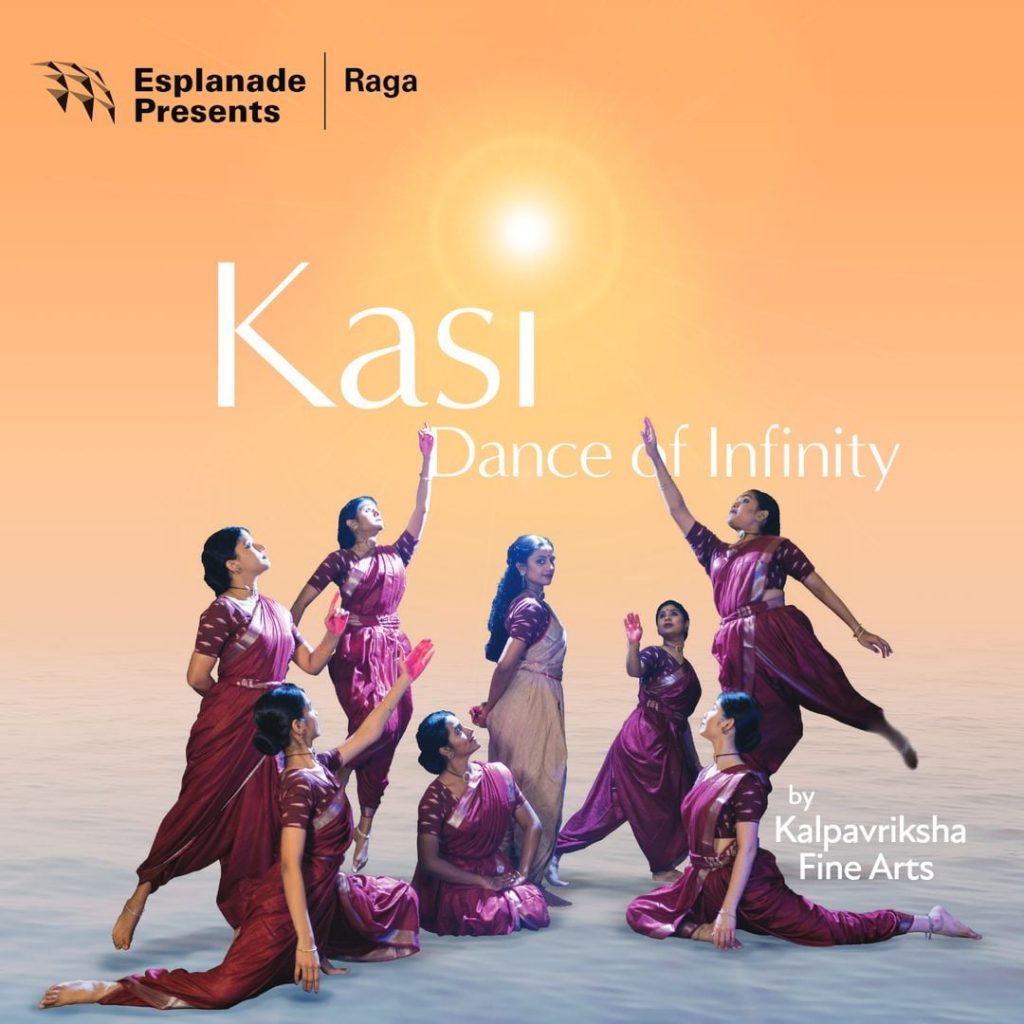Kasi: A Journey Around & Within
Kasi – Dance of Infinity was well-researched, layered and inter-woven in its premise and unfolding, writes Swarnavarsha Gurumoorthy
Kasi – Dance of Infinity by Kalpavriksha Fine Arts, presented under Esplanade’s Raaga series is a choreographic work of Meera Balasubramanian under the mentorship initiative as part of Apsaras Arts’s Indian Performing Arts Convention (IPAC) Residency program.


Under the guidance of renowned dancer Rama Vaidyanathan, Meera Balasubramanian and her team took the audience through the length and breadth of Kasi, referred to as the spiritual capital of India, letting us journey its vibrant and varied landscape.
Divided into four acts, each with a flavour of its own, the production was a celebration of the art of detailing – well-researched and interwoven by Meera, who personified the notion of Kasi.
The first act, I am Kasi, opened with the depiction of restlessness within one’s mind, effectively portrayed by the ensemble dancers who broke into a vibrant jathi placing themselves in the formation 8 attempting the establish the idea of infinity. The fluidity in the formations ensured that the varying heights of the supporting dancers were barely significant in the Kasi Panchakam that followed.
The second act titled I am Avimukta choreographed with graceful movements glorified goddess Annapurna and her generosity. Act Three began with the process of weaving – thoughtfully conveyed using body movements and adavus with appropriate lighting techniques.
To bring in an element of love and union, a Thumri was presented by Meera who wore a purple lehenga like a Kathak dancer, accompanied by the dancers enacting a story of two lovers in the background. This act, I am Benaras ended with Meera presenting a Benaras silk garment that brings a couple (means what?) draws parallels to the rivers, Varun and Asi that unite as Varanasi.



The final act, I am Mahasmashaana added vigor after the mellifluous Thumri. The entry was marked by three dancers who moved the audience with their soulful devotion and spiritual ecstasy in a complete trance chanting Kaashikaa-Pura-Adhinaatha-Kaalabhairavam Bhaje.
Kalabairava considered the Lord of Kashi, also represents time and breaks the cycle of life and death to attain salvation. A Thillana in ragam Nalinakanthi (composed by Sudha Raghuraman) after that vibrant Kalabairava, offered a different perspective of Kasi with a suggestive depiction of the famous Ganga Aarthi.
In an attempt to establish the continuous cycle of time, there were no significant pauses between the acts for the audience to absorb certain aspects of the presentation. The simple aaharya (costume) designed by Meera Balasubramanian and minimalist jewellery not only complemented the mood but also helped the cast execute complex movements with ease. Added to this, the well-seasoned ensemble dancers – Akshaya, Maanasa, Roshini, Preethi, Shobana, Shreya and Soo Mei Fei – maintained high energy levels through the five shows across three days.
The musical pieces for the production were carefully chosen from the works of Adi Shankara, Swathi Tirunal, Muthusamy Deekshitar and other eminent composers beautifully arranged and sung soulfully by Delhi-based Sudha Raghuram. One felt that the Thumri could have been handled by a Hindustani singer to add that flavour of a Kathak composition.
With Kasi, Meera has established herself as an able choreographer who has the ability to translate her vision, on stage.









